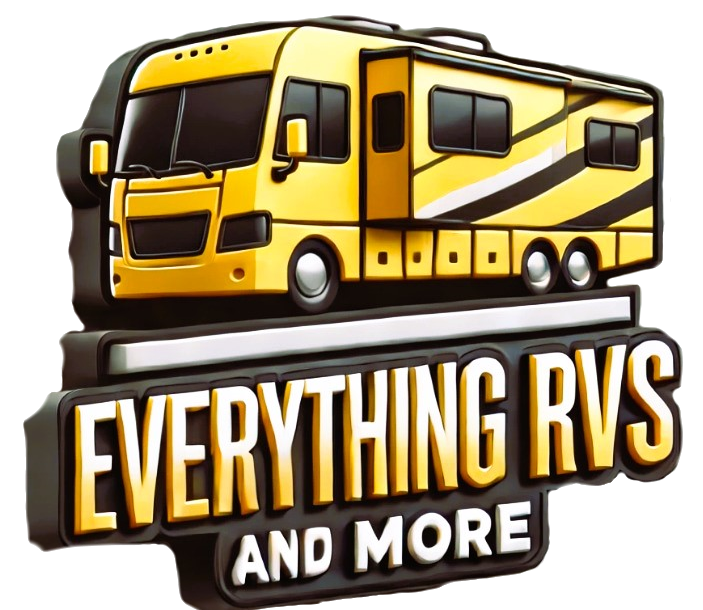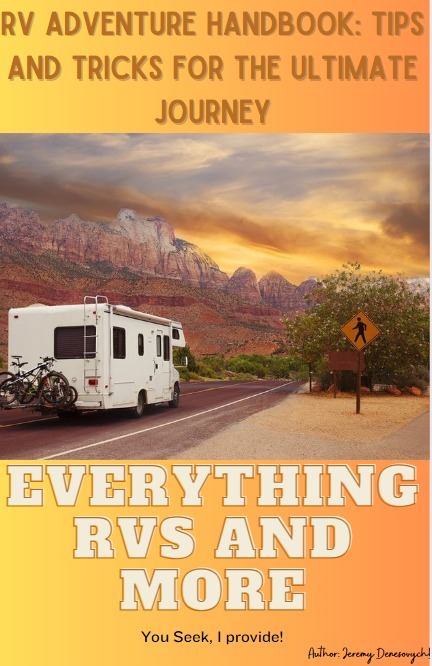Affiliate Disclosure: I earn commissions if you shop through the links below at no additional cost to you.
Last Updated on February 22, 2025 by Jeremy
RV solar power lets you enjoy the freedom of the open road while still having the comforts of home. Many RV owners are making the switch to solar these days. Imagine not needing to find the next campsite with electrical hookups or worrying about running out of power. When your RV can harness the sun’s energy, you’re set for flexible, off-grid adventures.
Going off-grid means you’re not dependent on traditional power sources. With solar power, you can park wherever you want, whether that’s in the mountains, desert, or by the beach. It’s about enjoying your journey on your terms without compromising on the essentials like keeping your fridge running or charging your devices.
Understandably, new RV owners might feel a bit overwhelmed when considering solar options. But it’s really about boosting efficiency and embracing a sustainable lifestyle. Solar panels convert sunlight into electricity, powering all the stuff that makes your RV feel like home. This setup not only cuts down on your energy costs but also helps the planet one sunny day at a time.
So, whether you’re dreaming of a weekend getaway or planning an extended road trip, solar power gives you the independence to roam freely without losing out on convenience.
Basic Principles of Solar Power
Solar panels are pretty amazing when it comes to turning sunlight into usable electricity. They work thanks to photovoltaic cells, which are like tiny powerhouses. As sunlight hits these cells, they generate a flow of electricity, and that’s where the magic happens. Even on a cloudy day, your panels are capable of gathering some energy.
Let’s break down the essentials of an RV solar power system:
- You’ve got your solar panels, which are mounted usually on the RV roof, catching those rays.
- Then, this captured energy gets stored in batteries, so you’ve got power on tap for when the sun isn’t shining.
- Finally, inverters play a crucial role. They change the direct current (DC) from your panels and batteries into alternating current (AC), which is what most of your appliances use.
Having a solid grasp on how these components work together helps you make better decisions, whether you’re picking out the right equipment or troubleshooting. It demystifies the process and really shows how solar can adapt to different needs and setups. So, knowing the nuts and bolts of solar power not only boosts your confidence but also ensures you make the most out of your solar investment in the long run.
Key Benefits of Adding Solar Panels to Your RV
Solar panels are more than just a tech upgrade for your RV—they’re a ticket to freedom and savings. Starting with your wallet, while the initial setup might seem pricey, the long-term savings are hard to ignore. Once those panels are doing their thing, your reliance on campground hook-ups or generators takes a nosedive, cutting down on your travel costs.
Besides the financial perks, there’s an eco-friendly angle that ought to be appreciated. Choosing solar power means you’re lowering your carbon footprint. It’s a way to camp with a clearer conscience, knowing you’re doing your bit for the environment.
Convenience is another huge plus. With solar, you’re in control of when and where you stop, free from the worry of finding power sources. This kind of flexibility is a game-changer for those who love spontaneous trips or prefer staying in remote, peaceful spots.
These benefits together not only enhance the RV lifestyle but also align with a growing desire to travel sustainably. Solar power gives you independence, cost savings, and environmental responsibility all wrapped up in one package.
Assessing Your Energy Needs
Knowing what you need in terms of energy is a smart move when planning your RV solar setup. It starts with calculating how much juice your usual appliances suck up. Think about your essentials: the fridge, lights, maybe even a small TV. Once you get a handle on your average daily use in watts, you’ll have a clearer picture of the solar system size required to keep everything running smoothly.
Getting this right isn’t just about comfort—it’s about balancing what you want from your RV lifestyle with what solar can realistically offer. For instance, if you’re someone who can’t skip a hot morning coffee made with your trusty espresso machine, you better factor that in. Or maybe you’re an avid remote worker needing a reliable internet setup—knowing your power needs is crucial.
After crunching numbers, it’s also essential to consider any future changes, like adding more gadgets or increasing your travel frequency. Flexibility in your solar setup can accommodate lifestyle tweaks without causing stress or necessity for immediate upgrades. Essentially, a well-planned solar system grows with you while covering your initial energy requirements.
Taking the time upfront to evaluate your energy usage helps prevent overload and extends the lifespan of your system. Plus, it lets you camp with peace of mind, knowing your power won’t run out unexpectedly.
Choosing the Right Solar Panels for Your RV
Picking the right solar panels requires understanding a bit about different types, mainly monocrystalline and polycrystalline. Monocrystalline panels generally offer higher efficiency and take up less space, which can be a great deal for RV roofs where real estate is limited. Polycrystalline panels come with a lower price tag and still do a solid job, albeit with a bit more space requirement.
Efficiency and durability are key factors when you’re on the hunt. You’ll want panels that can withstand the rigors of road travel. Whether it’s under the scorching sun or pouring rain, durability ensures you get reliable performance under different conditions. Also, think about your spatial constraints and ensure the panels fit properly without adding too much weight.
Budget is always part of the conversation. While saving money upfront might be tempting, consider the return on investment over time. Spending a little extra on higher efficiency can translate to more savings and fewer hassles down the road. It’s a balance between cost, performance, and what’ll best suit your travel style.
Selecting high-quality panels sets up your solar system for success. By matching the right panels with your energy needs and budget, you’re investing in a reliable power source that keeps your adventures well-lit and full of life.
Installation: DIY or Professional Help?
When it comes to installing solar panels on your RV, you’ve got a choice: go the DIY route or hire a professional. Each option has its ups and downs. If you’re handy with tools and love a good project, doing it yourself can save you some bucks and give you total control over the installation process. Plus, you’ll get a real understanding of your system.
That said, tackling it on your own means you need the right gear and a chunk of time. It’s not just about slapping panels on; it’s making sure everything’s wired correctly and safely. Mistakes can be costly if you end up damaging the panels or your RV during installation.
On the flip side, bringing in a professional might cost more upfront, but you’re paying for experience and peace of mind. A pro installer gets the job done quicker with a focus on safety and efficiency. They ensure the setup is clean, complies with any local codes, and is optimized for maximum power output.
Whichever path you choose, take time to weigh the pros and cons based on your experience, budget, and how comfortable you feel handling electrical components. Safety should be top priority, so if you’re in doubt, a pro might be the way to go. Ultimately, the goal is a reliable solar setup done right, whether by your hand or an expert’s.
Debunking Common Misconceptions
There’s a lot of talk out there about RV solar power that can be misleading. For starters, many believe RV solar setups come with a hefty price tag that’s not beginner-friendly. While the initial cost might seem steep, it’s important to consider the long-term savings on energy. Over time, you’re likely to save more than you spend, especially when you’re not paying for campsites with electrical hookups.
Another misconception is that solar panels only work in sunny conditions. Sure, they perform at their best under the sun, but they can still generate electricity on cloudy days. While output might dip without direct sunlight, panels aren’t completely useless in less-than-perfect weather.
There’s also this idea that maintaining solar panels is a hassle. Reality check—solar panels are pretty low maintenance. Regular checks to clear off dirt and debris are usually all that’s needed to keep them performing well. If you’re dealing with heavy snowfall or lots of leaves in the fall, you might need to be a bit more hands-on, but it’s all manageable.
Understanding the truth behind these myths can empower new RV owners to make informed decisions about embracing solar power. It’s about seeing solar for what it is—a reliable, cost-effective, and simple-to-maintain option for powering your off-grid lifestyle.
Optimizing Solar Efficiency and Troubleshooting
To get the most out of your solar panels, it’s all about positioning and maintenance. Keep those panels clean and angle them correctly to catch the maximum amount of sunlight. If they’re dirty or shaded, their performance can drop. Regularly check for any obstructions like overhanging branches that could cast unwanted shadows.
A simple monitoring system can help you track your panels’ output and spot any dips in performance. Many setups come with built-in apps that make it easy to see how your system’s performing. If you notice anything weird like a sudden drop in power, troubleshooting becomes faster.
Common issues might include connections getting loose or fuses blowing. Such problems are usually straightforward to fix with a bit of patience. Having basic tools and a willingness to hunt down the issue can often get you back on track without too much hassle.
Scheduled maintenance and a little know-how can go a long way in preventing more significant problems. This isn’t just about keeping your energy flowing; it’s about extending the lifespan of your system. And when everything’s ticking along nicely, your solar setup will keep powering your adventures as planned.
Final Thoughts
Switching to RV solar power is a game-changer, offering the freedom to explore without being tethered to electrical hookups. Whether you’re chasing sunsets in the desert, camping deep in the forest, or parking by a secluded beach, solar power keeps your journey uninterrupted. It’s not just about convenience—it’s about embracing a self-sufficient lifestyle that aligns with the spirit of adventure.
For beginners, the learning curve might seem steep, but once you understand the basics, the benefits far outweigh the effort. With a well-planned system, you can enjoy reliable power, lower long-term costs, and the satisfaction of reducing your environmental footprint. Whether you choose a DIY approach or hire a professional, investing in solar means investing in your freedom.
So, if you’re dreaming of off-grid adventures, now’s the time to make the switch. The sun is your best travel companion—harness its power and keep your RV lifestyle running on your own terms.




.jpg/:/cr=t:5.56%25,l:0%25,w:100%25,h:88.89%25/rs=w:1240,h:620,cg:true)



Leave a Reply